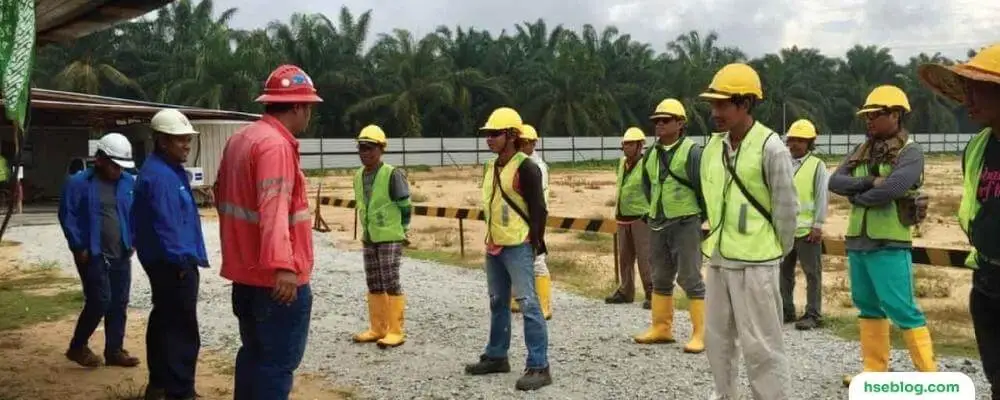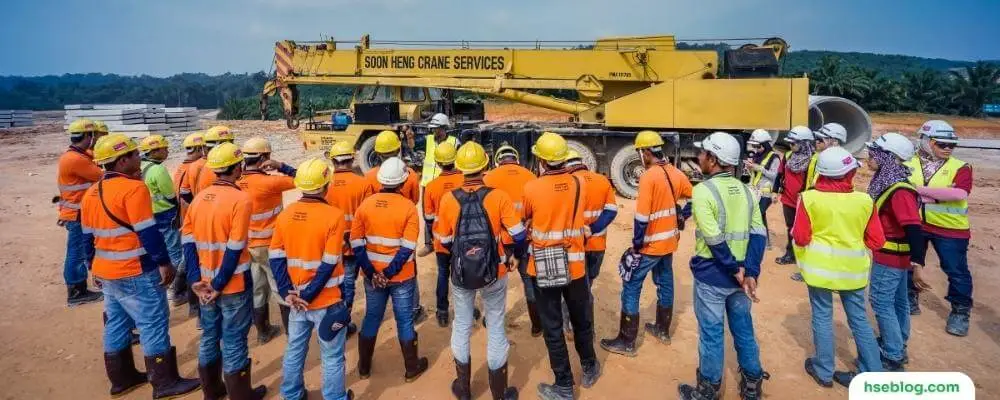A safe and productive work environment is the cornerstone of any successful business, and Toolbox Talks play a crucial role in maintaining and promoting workplace safety. These informal safety meetings allow team members to discuss specific hazards, reinforce safe work practices, and address any concerns related to workplace safety. But how often should these important discussions be held? In this blog, we will delve into the factors that influence the frequency of Toolbox Talks, helping you determine the optimal schedule for your organization.
From considering industry-specific risks to accommodating new personnel and addressing changes in work conditions or processes, we’ll guide you through the key elements that can impact the frequency of Toolbox Talks. By understanding the nuances of your work environment and tailoring the frequency of these safety conversations, you can create a robust safety culture and minimize the risk of accidents and injuries on the job. Let’s dive into the factors that will help you determine how often your team should gather for a Toolbox Talk.
How Often Should A Toolbox Talk Be Undertaken?
A Toolbox Talk is an informal safety meeting focused on specific workplace hazards, safe work practices, or reinforcing the importance of following safety protocols. The frequency of Toolbox Talks depends on the nature of the work, the risks involved, and the company’s safety policies.
In general, it’s recommended to conduct Toolbox Talks at least once a week or at the beginning of each shift. However, the frequency may vary based on factors such as:
1. The Industry And Its Associated Risks
High-risk industries, such as construction, oil and gas, mining, or heavy manufacturing, typically involve work environments and tasks with a greater potential for accidents, injuries, or fatalities. These industries may require more frequent Toolbox Talks to ensure workers remain aware of the hazards, safe work practices, and necessary precautions.
For example, construction workers may encounter hazards such as falls from heights, electrocution, heavy equipment accidents, or exposure to harmful substances. Regular Toolbox Talks can reinforce the importance of using personal protective equipment (PPE), following proper procedures and adhering to safety regulations in such environments.
On the other hand, industries with lower risk levels, such as office environments, may not require Toolbox Talks as frequently. Safety discussions might focus more on ergonomics, fire safety, or emergency evacuation procedures in these settings.

2. Changes In Work Conditions Or Processes
When determining the frequency of Toolbox Talks, it’s essential to consider changes in work conditions, equipment, or procedures. If there is a change in any of these aspects, a Toolbox Talk may be necessary to address the new risks and ensure that workers remain informed and vigilant about potential hazards and safe work practices. Some key scenarios where a Toolbox Talk would be useful include:
- Changes in work conditions: Alterations can result from weather, size modifications, or different project phases. For example, construction workers may face increased risks of slips and fall on wet or icy surfaces. A Toolbox Talk can help address these new hazards and remind workers to take necessary precautions.
- Changes in equipment: Introducing new equipment or tools may present different hazards or require specific handling and safety procedures. A Toolbox Talk can educate workers on the new equipment’s proper use, maintenance, and safety features, minimizing risks.
- Changes in procedures: Updates or modifications to work procedures, such as changes in safety protocols, can impact how tasks are performed. Conducting a Toolbox Talk helps workers know the updated procedures, understand the reasons for the changes, and follow the new guidelines accordingly.
By discussing these changes through Toolbox Talks, you can keep workers informed and prepared for potential hazards, reducing the likelihood of accidents and injuries. These meetings can also allow workers to ask questions, clarify uncertainties, and share their experiences or concerns.
3. New Personnel Or Temporary Workers
When new personnel or temporary workers join a team, conducting a Toolbox Talk is essential to ensure they understand and adhere to the safety procedures and protocols specific to the workplace. This is important for several reasons:
- Familiarize with safety culture: Introducing new workers to the company’s safety culture helps them understand the organization’s commitment to safety and the expectations for following safety rules and procedures.
- Address specific hazards: Every worksite has unique hazards, and it is important to inform new workers about the risks of their new workplace. Discussing potential hazards and necessary precautions during a Toolbox Talk helps prepare them to work safely and mitigate risks.
- Training on safety procedures: A Toolbox Talk allows you to train new workers on the appropriate safety procedures, use of personal protective equipment (PPE), and emergency response plans. This helps ensure they have the knowledge and resources to maintain a safe work environment.
- Open communication: Toolbox Talks allow new workers to ask questions, address concerns, and engage with their colleagues and supervisors on safety-related topics. This promotes open communication and helps them feel more comfortable and confident in their new work environment.
- Consistent safety standards: By incorporating Toolbox Talks for new workers, you help maintain consistent safety standards across the organization, reducing the risk of accidents and injuries caused by misunderstandings or lack of knowledge.
In conclusion, conducting a Toolbox Talk when new workers join the team is crucial in fostering a strong safety culture, integrating new team members, and ensuring they understand and follow their new workplace’s safety procedures and protocols.

4. Incidents Or Near Misses
When an incident or near-miss occurs, conducting a Toolbox Talk is crucial to address and learn from the situation. The purpose of the Toolbox Talks in this context is to:
- Review the event: Analyze the incident or near-miss to understand what happened, identify the root causes, and determine the factors contributing to the situation. This helps raise awareness of the hazards and risks involved.
- Reinforce safety procedures: Use the Toolbox Talk to remind workers of the importance of following safety protocols, adhering to guidelines, and using personal protective equipment (PPE) as required.
- Share lessons learned: Discuss the incident’s or near-miss investigation findings and communicate any corrective actions or improvements needed to prevent similar occurrences. This helps the team learn from the experience and improve overall safety.
- Encourage open communication: Provide a platform for workers to voice their concerns, ask questions, and share their insights or suggestions related to the incident or near-miss. This promotes a culture of transparency and collaboration, essential for maintaining a safe work environment.
- Prevent recurrence: Discussing incidents or near-misses and addressing the contributing factors can help prevent similar events from happening again, ultimately reducing the risk of accidents and injuries on the job.
In summary, conducting a Toolbox Talk following an incident or near-miss is essential in fostering a proactive safety culture, learning from mistakes, and continuously improving workplace safety.
Conclusion
A toolbox talk is essential to workplace safety and can significantly reduce the risk of accidents or injuries. The frequency of toolbox talks depends on the industry and associated risks, work conditions or process changes, and the new personnel or temporary workers. Toolbox talks should be held at least once weekly or more frequently if necessary. However, the quality of the toolbox talk is more important than the frequency, so it is crucial to ensure that the information presented is relevant, up-to-date, and engaging.
Employers should also encourage employee participation, feedback, and questions to ensure that the toolbox talk effectively promotes a workplace safety culture. Employers can ensure that their employees are informed, prepared, and empowered to work safely by prioritising toolbox talks, leading to a more productive and healthy work environment.

